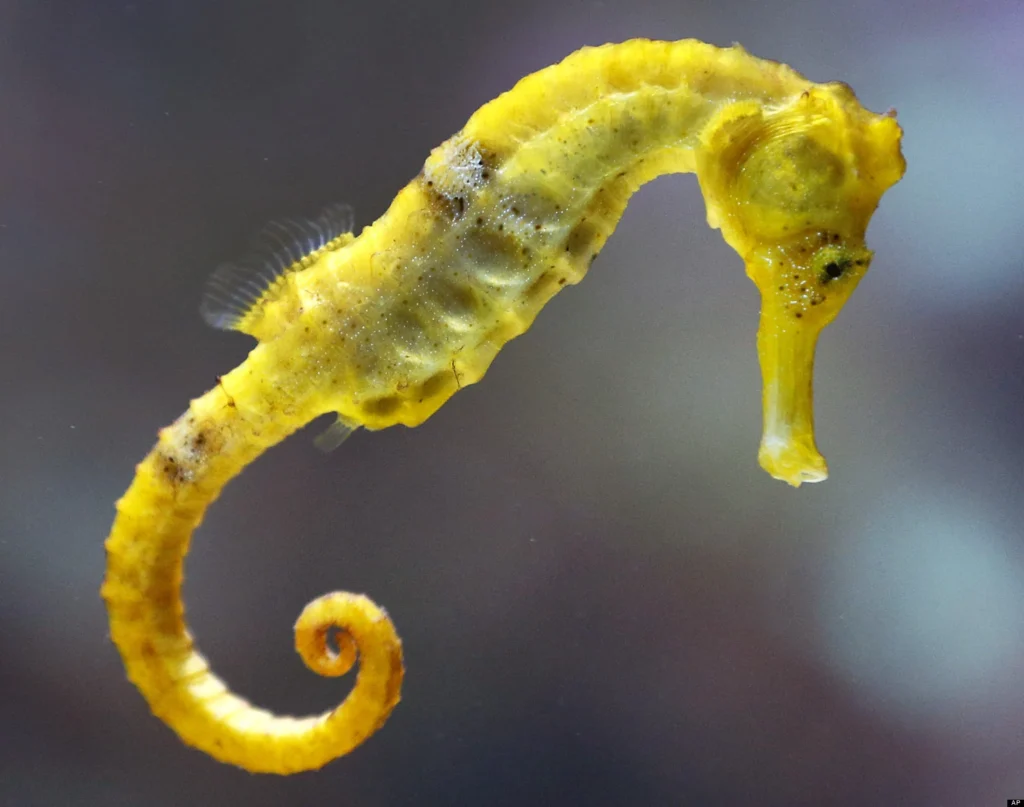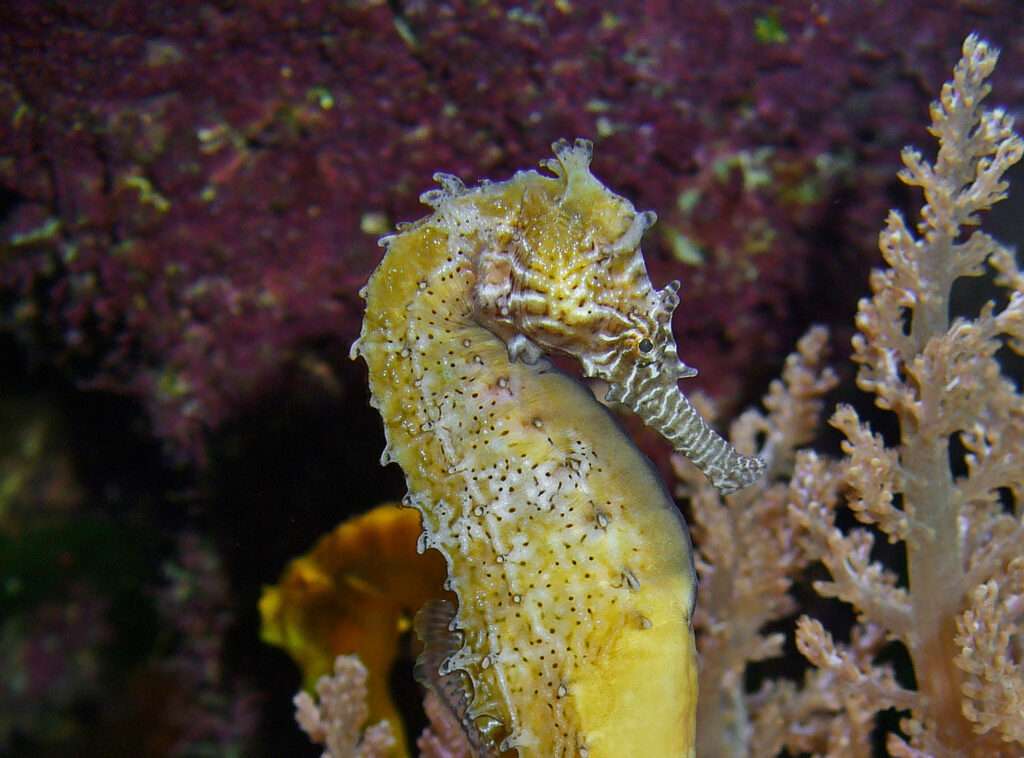
Researchers to refer to a legendary god who was half-fish and half-horse originally used hippocampus. They are described as having a horse-like head that is 90 degrees off of an upright, armor-plated body with a curved trunk and a prehensile tail. The bodies of spotted seahorses might be completely black and have a gritty texture, or they can be creamy, pale yellow and have huge, dark spots all over them. These hues and patterns can be momentarily altered to blend in with their immediate environment and serve as a form of camouflage to ward off predators.
Habitat
The Hippocampus kuda, a solely marine species, is found in the India and Pacific region. The native existence of H. kuda has been documented in about 23 countries, from China to Australia. Spotted seahorses are widely available in captivity due to their popularity as decorative aquarium fish.
Although they have been discovered as deep as 55 m, H. kuda typically live in shallow inshore habitats with an average depth of 0 to 8 m. Mangroves, coastal seagrass beds, estuaries, coastal bays and lagoons, ports, sandy deposits in rocky littoral zones, and rivers with brackish water are just a few places where you might find them. Additionally, spotted seahorses have been seen up to 20 kilometers from the coast clinging to floating sargassum.
Physical Appearance
The spotted seahorse has a conservative morphology and lacks fish-specific anatomical characteristics including teeth, a gut, and pelvic and caudal fins. Additionally, they lack scales and have a layer of skin stretched over a number of bony plates that are visible as rings around the trunk in place of scales. The different Hippocampus species can be distinguished by these obvious rings. Instead of the usual spines found along the body, the Hippocampus kuda has low, rounded bumps that set it apart from other seahorses.
The deep head and distinctively thick snout of spotted seahorses define them. The search area is increased when the eyes on either side of the deep head may move independently while hunting for prey.

Food Habits
The only type of food that spotted seahorses can survive on is live, moving prey. They have enormous appetites and mostly consume zooplankton, tiny crustaceans, and fish larvae. H. kuda use their broad snouts and unique jaws to suck in their prey because they have weak swimming abilities.
Table





